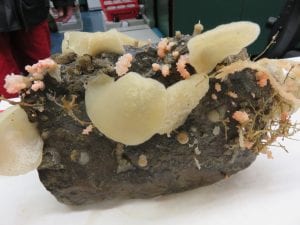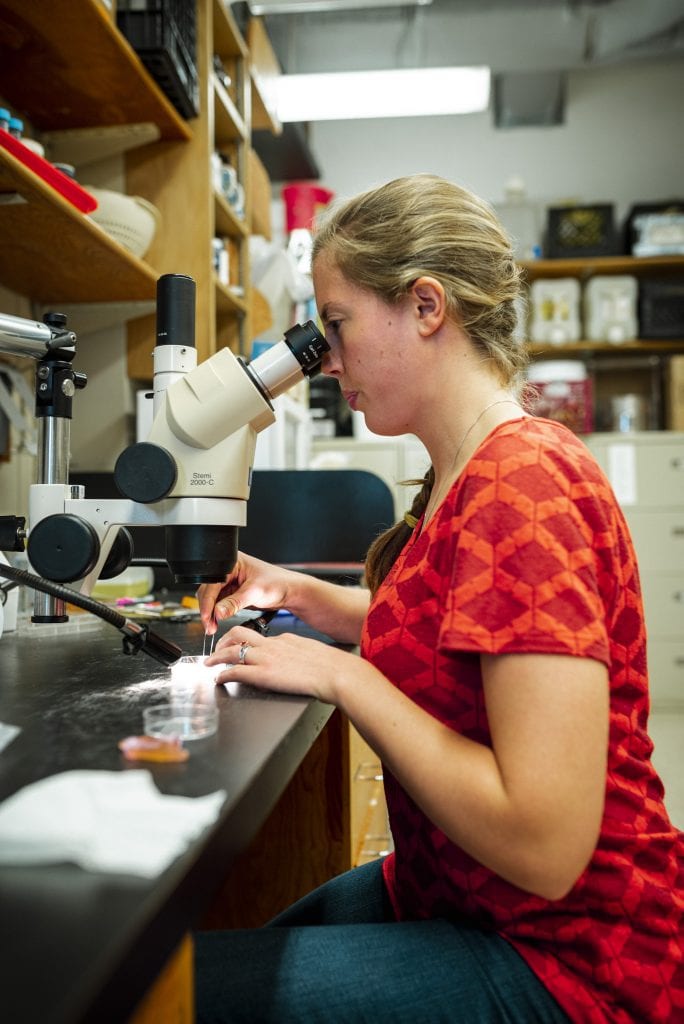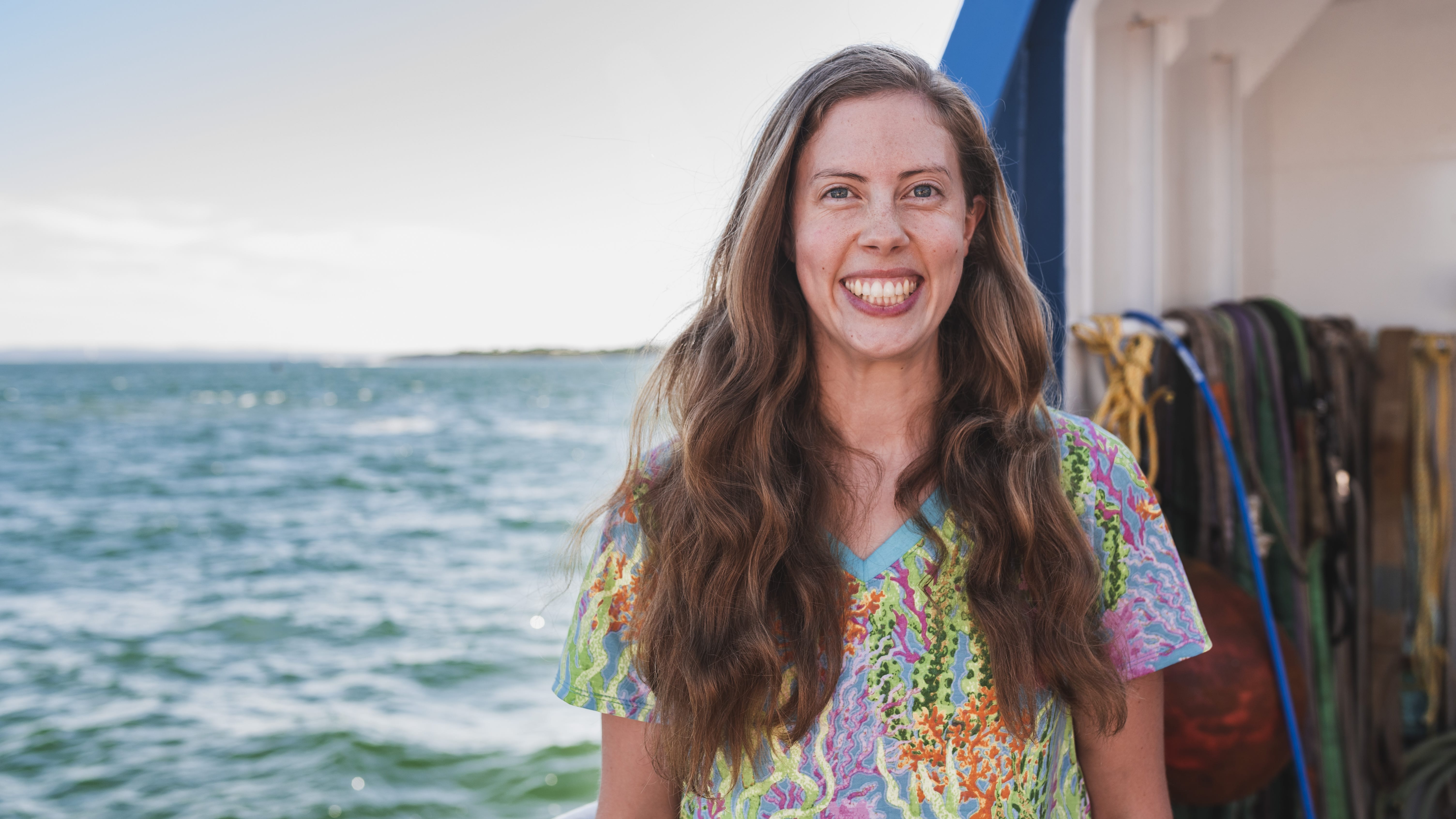How do you study marine metamorphosis?
Marine ecologist Kirstin Meyer-Kaiser can tell you
By Daniel Hentz | October 22, 2019
Kirstin Meyer-Kaiser is a marine benthic ecologist, whose primary research focuses on how invertebrates establish themselves along the seafloor. Meyer-Kaiser achieved her PhD at the University of Oregon, and began her time as a postdoctoral scholar at Woods Hole Oceanographic Institution in the fall of 2016. She is now an assistant scientist in the institution’s biology department. Her research has taken her as far north as the Arctic Circle, where she’s studied remote invertebrate communities while aboard the German icebreaker, Polarstern.
When did you begin researching underwater invertebrates, and what do you find interesting about them?
I began researching invertebrates in college. I got accepted to my university's Freshman Fellow research program and was paired with a professor who specialized in African freshwater crabs. We don’t have freshwater crabs in North America (crayfish fill their ecological niche), but they're common in rivers and lakes in Africa, South America, and Asia.

A stone collected by ROV Phoca from more than a mile deep in the eastern Fram Strait, northeast of Greenland. Species on the surface include soft coral Gersemia rubiformis, and sponge types Phakellia sp., and Cladorhiza gelida. (Photo by Kirstin Meyer-Kaiser | Woods Hole Oceanographic Institution}
My first assignment was to catalog my advisor's specimen collection, so my very first semester of college, I was exposed to a wide breadth of invertebrate biodiversity, and that captivated me. By the end of my freshman year, I had described a new species of crab from Madagascar—Foza ambohitra.
Nowadays, it is still the diversity of invertebrates that captivates me the most. There are 37 phyla in the animal kingdom, and vertebrates are only one subphylum.
Invertebrates have such wide-ranging body plans from flexible hydrostatic skeletons to tough outer shells. Their larvae are even more fascinating, with all sorts of appendages and structures that are perfectly-suited to a planktonic existence, but which are later discarded or re-formed during metamorphosis.
Which questions have motivated your research most?
I study the colonization and connectivity of island-like habitats in the sea. Most animals that live on the seafloor reproduce by sending their larvae into the water column. It's like a caterpillar and a butterfly—the caterpillar is the butterfly's larva. It looks totally different, it eats different things, lives in a different habitat, but then metamorphoses to become the adult organism.
Marine larvae are planktonic, which means they can't swim against ocean currents, so the only control they have is swimming vertically to a different depth and allowing themselves to be carried by the current at that depth. I’m interested in figuring out how larvae disperse to new habitats and recruit there.
I honestly think the sessile (stationary) invertebrate communities I study are really beautiful, and my driving force is to figure out how they work.
At the most basic level, my research centers around three questions: Where do the larvae come from? Where do the larvae go? What happens when they get there?

Meyer-Kaiser peers into her microscope to analyze samples of larval specimens collected on a recent trip to the Arctic on the German icebreaker, Polarstern. (Photo by Daniel Hentz, Woods Hole Oceanographic Institution)
You’re out to sea a great deal, studying fairly remote environments—so what have been the most exciting discoveries you’ve made thus far?
A major line of my research right now is figuring out how larvae colonize isolated, island-like habitats such as shipwrecks. A shipwreck is by definition not supposed to be there, so any larva that dispersed to the wreck's location might have done so by mistake.
Maybe the larva swam to a shallower depth than other individuals and got carried away by a fast ocean current. Maybe the larva stayed in the water column longer than others and dispersed farther.
I have an ongoing project examining shipwrecks in Stellwagen Bank National Marine Sanctuary to figure out how shipwreck communities differ from natural hard-bottom reefs, and I did an experiment this summer to investigate what factors might cause some larvae to disperse farther than others.
Another major line of research for me is larval dispersal and recruitment in the Arctic. Polar habitats are difficult to access, so for many organisms, we're just now collecting baseline information. Extreme seasonality and environmental conditions also have a strong influence on colonization and growth. I recently completed a long-term experiment with German collaborators demonstrating that community assembly in the Arctic deep sea takes decades.
What is your first memory of interacting with the ocean?
When I was seven, I read a biography of a shark biologist named Eugenie Clark. It was titled "The Shark Lady," and I can still picture the cover. I was sold—I wanted to do what she did. Ironically, I don’t actually remember the first time I saw the ocean, but it was always somewhere in my consciousness.
Out of all the marine institutions you could work with, why choose WHOI?
I first came to WHOI as a postdoc, and I chose it largely because of its reputation as a leading research institution. After two years, I was hired and decided to stay on as scientific staff, a decision that was based largely on the intellectual freedom WHOI employees enjoy.
Unlike at a university, where I would be obligated to teach each semester, I can dedicate 100 percent of my time to research at WHOI. This gives me a lot more flexibility and allows me to pursue my questions in a more direct way and drive my field forward.

